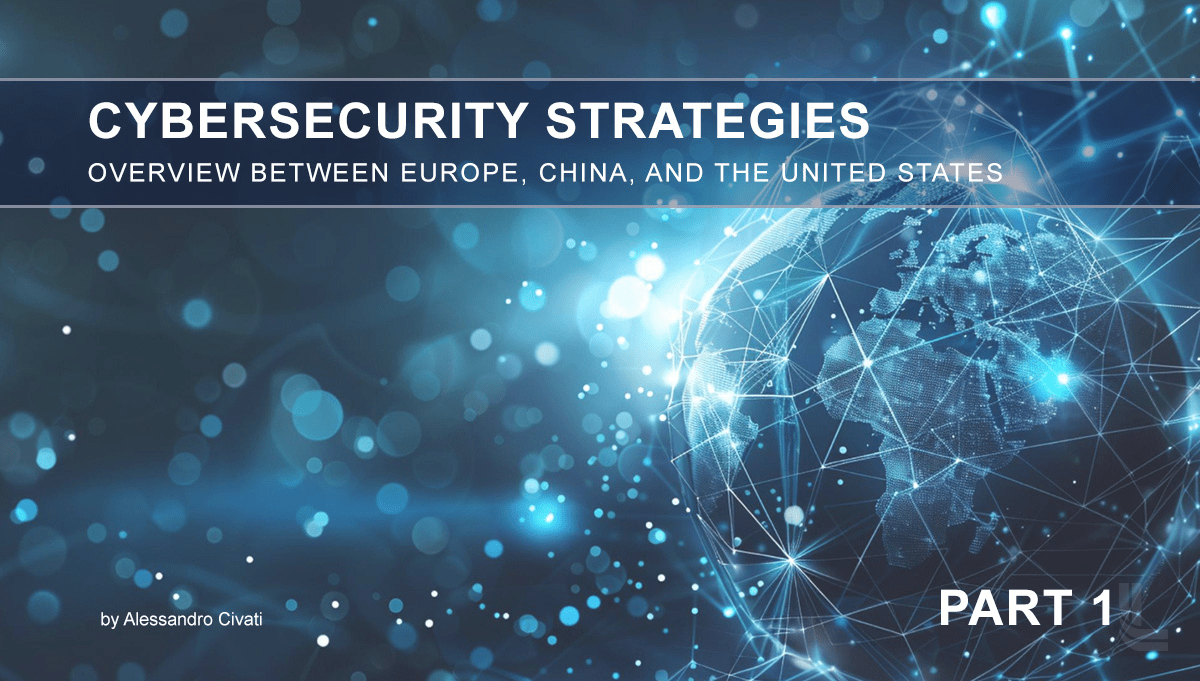This document provides a comprehensive overview and comparison of the cybersecurity strategies employed by the European Union (EU), China, and the United States (US). It highlights each strategy’s key components, underlying philosophies, and distinctive elements.
### 1. Underlying Philosophy and Governance
- The European Union (EU) emphasizes cyber resilience, international cooperation, and multi-stakeholder governance. It promotes an open, free, and secure cyberspace based on democratic values and human rights. A strong focus is placed on collaboration between public and private sectors, with initiatives aimed at enhancing information sharing and joint efforts to improve cyber resilience. The EU adopts comprehensive regulatory frameworks like the NIS Directive and the Cybersecurity Act to ensure a high level of security across member states.
- China bases its strategy on the principle of cyber sovereignty, emphasizing state control over cyberspace within its borders and the flow of information. The Chinese government exercises centralized control over cybersecurity measures, often implementing stringent regulations on data localization and surveillance. There is a strong emphasis on maintaining national security, social stability, and regime preservation.
- The United States (US) emphasizes the protection of national security, economic competitiveness, and critical infrastructure. There is significant emphasis on collaboration between government and private sector entities, given that a large portion of critical infrastructure is privately owned. Cybersecurity governance involves a combination of federal oversight and state-level implementation, allowing for flexibility and localized responses to cyber threats.
### 2. Legislation and Regulation
- The EU employs the General Data Protection Regulation (GDPR), which focuses on protecting personal data and privacy. The NIS Directive establishes security requirements for critical infrastructure and promotes cross-border cooperation among member states.
- China enforces strict data localization and mandates robust cybersecurity measures for companies operating in China through its Cybersecurity Law. The Data Security Law focuses on the protection of important data and imposes controls on cross-border data transfers.
- The US employs sector-specific regulations and guidelines, such as HIPAA for healthcare and FISMA for federal information systems. The US frequently updates its cybersecurity strategy through Executive Orders and directives from the President, reflecting the dynamic nature of cybersecurity threats and policy.
### 3. Approach to Technology and Innovation
- The EU supports open innovation and collaboration, encouraging cross-border cooperation and international standards. The region invests in research and development to foster cybersecurity innovation, with support for small and medium-sized enterprises (SMEs).
- China prioritizes self-reliance in key technological areas to reduce dependency on foreign technologies, with significant government investment in developing indigenous cybersecurity technologies and industries.
- The US aims to maintain its leadership in technological innovation, investing heavily in cybersecurity research and development. The National Institute of Standards and Technology (NIST) Cybersecurity Framework provides a voluntary set of industry standards and best practices to help organizations manage cybersecurity risks.
### 4. International Cooperation
- The EU seeks to position itself as a leader in global cybersecurity norms, promoting international cooperation through organizations like the United Nations and NATO. It engages in cyber diplomacy to build global partnerships and establish norms for responsible state behavior in cyberspace.
- China forms strategic cyber alliances with countries that align with its principle of cyber sovereignty and actively participates in shaping international cybersecurity norms while prioritizing sovereignty and non-interference principles.
- The US engages in extensive international cooperation through alliances like NATO and partnerships with allies to enhance global cybersecurity. The US actively promotes international norms and engages in cyber diplomacy to establish global standards for state behavior in cyberspace.
### 5. Public Awareness and Education
- The EU focuses on enhancing cybersecurity skills and education across the region, promoting digital literacy and professional training. It encourages public awareness campaigns and initiatives to engage citizens in cybersecurity best practices.
- China invests in developing a skilled cybersecurity workforce through specialized education and training programs. It promotes public awareness with a focus on state-approved messages and control over information dissemination.
- The US runs initiatives like National Cybersecurity Awareness Month to educate the public about cybersecurity best practices. The country invests in cybersecurity education and training programs at all levels, from K-12 to higher education and professional development.
### 6. Military and Defense
- The EU primarily focuses on protecting civilian infrastructure and services, while recognizing the importance of addressing cyber threats to defense. It collaborates with NATO on defense-related cybersecurity issues.
- China integrates cyber capabilities into its military strategy, with significant investment in both offensive and defensive cyber operations by the People’s Liberation Army (PLA). The strategy emphasizes preparedness for cyber warfare and cyber espionage activities.
- The US has established a dedicated Cyber Command (USCYBERCOM) to integrate cyber operations into military strategy, emphasizing both defensive and offensive capabilities. Cybersecurity is a critical component of national defense strategy, with significant investments in securing military networks and capabilities to conduct cyber warfare.
The cybersecurity strategies of the European Union, China, and the United States exhibit significant differences reflecting their unique political, economic, and social contexts.
The EU emphasizes regulation, cooperation, and public-private partnerships.
China prioritizes cyber sovereignty, centralized control, and national security.
The US focuses on national security, economic competitiveness, public-private collaboration, and maintaining technological leadership.
These distinct approaches highlight the diverse ways in which different regions address the complex and evolving challenges of cybersecurity.
Author: Alessandro Civati.
👉👉👉 Intellectual Property Protected by LutinX Blockchain 👈👈👈
🔒 Protect your intellectual property in ONE minute only! Our legally recognized technology works in 175+ countries and it’s FREE! get the BLOCKCHAIN power to safeguard your creations. Don’t wait, secure your innovations now. Sign up for your free account at https://lutinx.com. #ProtectIP #Blockchain #Innovation

